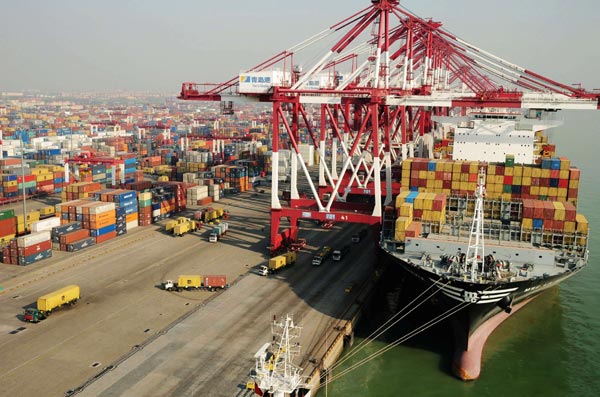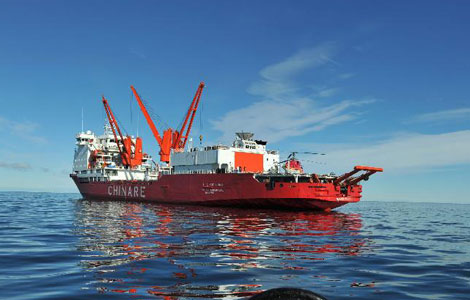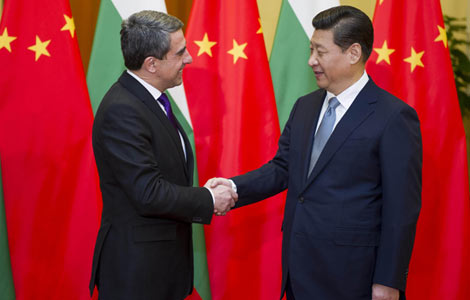Getting to the top of the trade tree in value
Updated: 2014-01-14 07:16
By Mike Bastin (China Daily)
|
||||||||
|
 Qingdao port in Shandong province. China's total trade was $4.16 trillion last year. Yu Fangping / For China Daily |
But nation must focus on higher quality products through mergers
Even although the US Department of Commerce will not publish its 2013 trade figures until February, it appears clear that the value of China's goods' trade will have exceeded that of the US last year.
China's total trade was $4.16 trillion in 2013, according to the General Administration of Customs.
What does this mean for the overall competitiveness of the Chinese economy?
Certainly, the recovery in the global economy, although patchy and fragile, was a contributory factor. Structural reforms in China - for example, the establishment of a free trade zone in Shanghai - also played a key part.
Overtaking the US, however, should come as no surprise. In 2009 China, became the world's largest exporter and second only to the US in imports.
The significance and likely continuation of China as the world's leading goods trader shouldn't be underestimated. It's yet another milestone in China's miraculous economic emergence over only a 30-year period. And it brings China ever closer to the role of global economic superpower, even though it's still called an "emerging" economy.
It's just a matter of time until China takes a seat at the world's top table. The G8, for example, will surely become increasingly less influential without a permanent place for China.
The term BRICs (Brazil, Russia, India and China) should also be abandoned, given China's far superior economic position.
But while trade statistics provide an important insight into a nation's economic competitiveness, they often fail to tell the full story.
Attention must also be given to the lack of "value-added" and branded products from China. The nation's overall export competitiveness still centers on low costs and low prices, whereas the US approach focuses on high technology, high quality and premium brands.
Low-cost strategies are rarely sustainable and inherently limiting. The need for Chinese industry to move up the value-added chain and produce world-class premium brands has become clear. No one is more aware of this need than China's business leaders, hence the growth in international expansion and takeovers of famous foreign brands.
Many might argue that China's position as a low-cost producer has contributed to a business culture that either ignores or fails to grasp the value-added, premium-brand approach of developed economies.
However, China's rapid economic emergence has resulted in far stronger, cash-rich, Chinese companies, some of which are now well-placed to acquire foreign brands.
This is the fastest method of international expansion for Chinese industry and probably the best way of moving toward a more modern, brand-oriented business culture. Expect more takeovers of foreign brands.
Cross-border takeovers of famous foreign brands, however, will only lead to a much-needed improvement in the typical Chinese company's business model if post-acquisition integration is completed swiftly and effectively. Integration needs to focus on picking up the latest technologies and the skills and knowledge for successful brand management.
Chinese companies should take heart from toppling the US as the world's biggest goods trader, but they should also capitalize on this with even greater determination to become the world's leading producer of high-quality, branded goods.
The author is a visiting professor at the University of International Business and Economics in Beijing and a senior lecturer on marketing at Southampton Solent University's School of Business.

 Cristiano Ronaldo wins FIFA best player award
Cristiano Ronaldo wins FIFA best player award
 Xuelong carries on mission after breaking from floes
Xuelong carries on mission after breaking from floes
 Beijing and Sofia vow new initiatives
Beijing and Sofia vow new initiatives
 71st Golden Globe Awards
71st Golden Globe Awards
 Bangkok unrest hurts major projects and tourism industry
Bangkok unrest hurts major projects and tourism industry
 No pant for cold subway ride
No pant for cold subway ride
 Tough army training turns boys into men
Tough army training turns boys into men
 Blaze prompts concern for ancient buildings
Blaze prompts concern for ancient buildings
Most Viewed
Editor's Picks

|

|

|

|

|

|
Today's Top News
At least 16 dead in E China factory fire
Newspapers must change or die
Abe’s brother to explain shrine visit to US
Protests cannot end Thai deadlock: observers
Mercy killing still a hot button issue
Army built 'with peace in mind'
UN plea made on war victims
Li: China's tech innovation a priority
US Weekly

|

|







